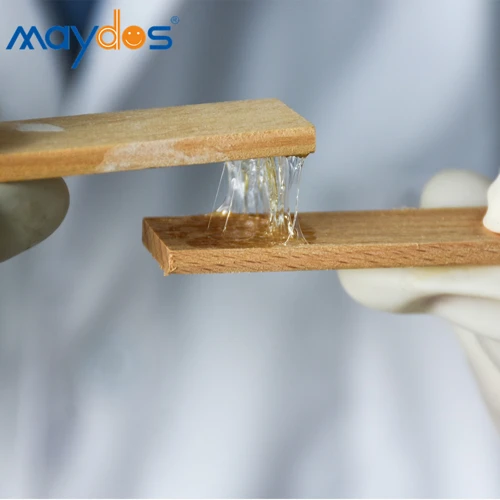Combining diverse materials like fabric and rubber can seem challenging, but with the right techniques, it becomes a straightforward task. The fusion of these two substances opens up a wide range of creative and functional possibilities for DIY enthusiasts, crafters, and professionals alike. From fashioning custom shoe soles to crafting protective gear, understanding how to glue fabric to rubber is an essential skill that can transform the way you approach material manipulation.
Understanding Different Rubber Types for Bonding
Rubber comes in various types, each with its own properties and compatibility with adhesives. Natural rubber is quite tacky and often easier to adhere, while synthetic rubbers like neoprene and silicone offer different challenges due to their chemical resistance. Recognizing the type of rubber you are working with is crucial, as it will dictate the kind of fabric to rubber adhesive necessary for a successful bond.
Essential Preparations for Gluing Fabric to Rubber
Cleaning and Priming Rubber Surfaces
To ensure a strong bond, the rubber surface must be free of any contaminants. Start by wiping the surface with a clean cloth and a suitable cleaner, like isopropyl alcohol, to remove dirt and oils. In some cases, lightly sanding the rubber can create a more receptive surface for the adhesive.
Preparing the Fabric
Similarly, the fabric should be prepped before bonding. Ensure it’s clean and dry, and consider the weave and weight of the material, as these factors will affect the choice of adhesive and the method of application.
Choosing the Best Glue for Fabric to Rubber
Evaluating Fabric to Rubber Adhesives
When selecting an adhesive for textile to rubber, consider the end-use of the bonded materials. Will they be subject to tension, heat, or moisture? Various glues offer different levels of flexibility, temperature resistance, and waterproofing, which will influence your choice.
Comparing Permanent Fabric to Rubber Glue Options
For a lasting bond, permanent fabric to rubber glue options must be scrutinized. Epoxy resins, polyurethanes, and certain cyanoacrylates are known for their durability and strength. These adhesives are designed to withstand wear and tear, making them ideal for applications that require a robust connection.
Step-by-Step Guide: How to Attach Fabric to Rubber
Applying the Adhesive for Textile to Rubber
With the best glue for fabric to rubber in hand, apply it evenly across the prepared rubber surface. Follow the manufacturer’s instructions for the adhesive, as some may require a thin layer while others might necessitate a more generous application.
Ensuring Strong Bonding between Fabric and Rubber
After applying the glue, carefully place the fabric onto the rubber, smoothing out any wrinkles or bubbles. Use a roller or a flat object to press the fabric firmly into the glue, establishing a secure bond. Allow the adhesive to cure as per the instructions before moving or testing the bond.
Fabric to Rubber Glue Tips and Tricks
DIY Fabric Rubber Glue Techniques
- Test your glue on scrap materials to perfect your technique.
- Use masking tape to outline where the glue should go for a cleaner application.
- For thicker fabrics, consider using a clamp to hold the materials together while the glue dries.
Maintaining the Bond: Longevity Tips
Once bonded, take care of your fabric and rubber creation. Keep it clean, and avoid exposing it to extreme temperatures or chemicals that could compromise the adhesive. Regular inspection can help catch any wear before it becomes a problem, ensuring your bond lasts.
Rubber and Fabric Bonding Guide: Best Practices
Adhesive Application Methods for Optimal Bond
For the best results, apply the glue evenly and avoid over-saturating the rubber, as this can cause the fabric to seep and create a weak bond. Also, ensure that both surfaces are in complete contact with no air pockets.
Troubleshooting Common Issues
If you encounter issues like peeling or weak bonds, it may be due to improper surface preparation or using the wrong type of glue. Double-check your preparation steps and consult with adhesive experts if necessary to address these challenges.
Conclusion: Achieving Durable Fabric to Rubber Adhesion
Mastering the art of bonding fabric to rubber can expand your crafting capabilities tremendously. With the right preparation, adhesive selection, and application techniques, you can create strong, durable bonds that withstand the test of time. Whether you’re a hobbyist or a professional, the knowledge of how to attach fabric to rubber is a valuable addition to your skill set.



